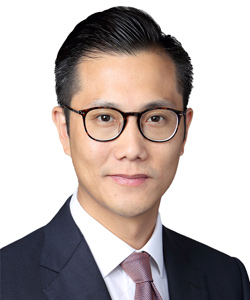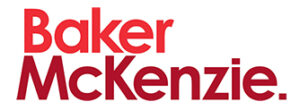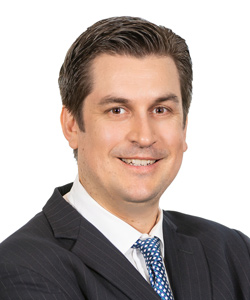Lessons for APAC de-SPACs
Like many US financial innovations exported worldwide, special purpose acquisition companies (SPACs) have garnered a mix of enthusiasm from companies and investors, and caution from regulators in Asia. For Asian companies looking to de-SPAC in US markets, the authors have compiled a set of lessons learned to allow businesses to maximise the odds of success in using this innovative deal structure.
Have a clear thesis in mind. Many companies seem to jump on financial innovations to make quick returns. For much of 2019 and 2020, SPACs had that flavour. Going public at a guaranteed valuation with no revenue track record seemed too good to be true. Unfortunately, it was.

Partner at Baker McKenzie in
San Francisco
T: + 1 415 984 3841
E: derek.liu@bakermckenzie.com
As a category, de-SPAC companies had significantly lower returns than traditional IPO companies. Many companies that went to the market on the basis of their projections saw dramatic drops when those projections hit inevitable road bumps. To make matters worse, redemption rates for the amount in trust – the funds raised in the SPAC’s IPO – remain stubbornly high, while private investment in public equity (PIPE) financings have become significantly more challenging.
So, for all the negative headwinds, why de-SPAC? For starters, early stage companies seeking to access lower cost of capital in the US market have few alternatives. Traditional IPOs are still not receptive to earlier stage companies that are seeking to market based on projections.
Another driver is that partnering with a well-connected SPAC sponsor can give companies a leg-up on capital markets expertise – something particularly valuable for APAC-based companies. Finally, the guaranteed funding or valuation is still there, in the right situation, all of which leads to a second observation.
Not all sponsors are equal. With 650 or so SPACs in the market, a “public-company ready” late-stage target has no shortage of suitors. How, then, does one select the right SPAC?
- First, expertise in the right industry or geography. The sponsor will take up seats on your board and has an outsized role in any PIPE or subsequent financing activities. Finding someone who can “translate” your APAC-centric story to a US audience is a significant asset. The right sponsor can also help you professionalise and grow your business as you take in more capital.
- Second, access to capital. Many sponsors are also private equity or venture capital firms that can deploy their proprietary capital to support the de-SPAC. Finding a firm that can backstop redemptions or commit PIPE capital not only de-risks the de-SPAC transaction but is a powerful signal to the US market of support.
- Third, alignment of interests. Sponsors get a significant amount of “free” equity, whether the deal succeeds or fails. Look for sponsors that can show their conviction by putting more capital (including their promote) at risk.

Partner at Baker McKenzie in New York
T: + 1 212 626 4456
E: michelle.heisner@bakermckenzie.com
It is not all about valuation. Since nearly all de-SPACs are fundraising events, the valuation should be thought of as the pre-money valuation offered by the SPAC. However, as SPAC funds are subject to redemption, the SPAC cannot generally guarantee funding at that negotiated valuation. Trading below the offer price is frequently taken to be a negative signal to the market, making future fundraising more challenging, so it is better to select a reasonable valuation that will generate sustained investor interest, including in the PIPE and public trading, rather than aggressively negotiating to maximise a headline valuation.
It is all about the PIPE. With redemptions running at high percentages, any funds raised in the SPAC’s IPO should be considered at-risk capital. Even if sponsors offer up a minimum cash closing condition, that closing condition only comes into play late in the process, when it is generally painful to terminate due to sunk costs and market perceptions. The only “safe” capital is the funding raised in the PIPE transaction that usually accompanies the announcement of the de-SPAC transaction and is not subject to redemption. In the current market, PIPE fundraising has become more challenging. Financial investors looking to profit from the de-SPAC “pop” have left the market and/or have their money tied up in existing investments. Companies must now market to longer-term investors. That trend is broadly positive, as investors are likely to stay and support the stock for longer. But it does mean that companies should budget more time pre-announcement to have conversations with potential PIPE investors.

Partner at Baker McKenzie in Hong Kong
T: + 852 2846 1718
E: derek.poon@bakermckenzie.com
While the authors have worked on transactions where the PIPE marketing has taken place post-transaction announcement, we have seen the challenge of such an approach, notably that post-announcement trading activity (if lower than par) will significantly depress investor appetite.
Be public company ready. SPACs have rightly been marketed as a faster way to go public, but faster does not mean skipping any steps. Companies will still need two or three years of Public Company Accounting Oversight Board-audited (PCAOB) financial statements to go public, and will still need adequate internal controls to be able to give required Sarbanes-Oxley compliance certifications.
As an APAC-based company listing in the US, be prepared to face enhanced scrutiny around related party transactions, anti-corruption or anti-money laundering procedures, and financial controls from US regulators and investors. Selecting board members with US public company experience is valuable in building out accounting, legal and investor relations functions. While the temptation exists to outsource everything to accounting and law firms, having the capabilities in-house will save money in the long run and result in greater coherence.
Projections. For many SPACs, forward-looking projections are crucial since historic financials may not justify their desired valuation and anticipated growth. The US Securities and Exchange Commission has expressed significant ambivalence regarding the use of projections in de-SPACs, but has not yet prohibited them.
For a de-SPACing company, the risk from projections is quite simple: What happens if they are not met? Projections go towards management credibility. The negative coverage associated with failing to meet projections is often worse than accepting a lower valuation in the first instance.
Further, investors who lose significant value when projections are reset are primed to cause trouble in the form of shareholder litigation. When using projections, ensure they build on realistic assumptions, with significant buffers built in to account for inevitable delays and underperformance.

Partner at Baker McKenzie in Singapore
T: + 65 6434 2684
E: ashok.lalwani@
bakermckenzie.com
Transaction fees. Going public is inherently an expensive proposition. A de-SPAC comes with visible and invisible fees. On the visible side, issuers should expect to pay underwriting fees from the initial IPO, legal fees for two sets of counsel, investment banking fees for de-SPAC advisory services, and accounting fees. But it is the dilution built into the de-SPAC structure itself that is the highest hidden cost.
Most prominent is the sponsor promote, which typically amounts to free equity worth 20% of the SPAC’s IPO capitalisation. Following the promote are warrants, which are generally exercisable at 15% above the SPAC issuance price of USD10 per share (or USD11.50). These warrants provide a ready source of additional capital. However, they also serve as a relatively sizable overhang on the public stock, and can amount to anywhere between 25% to 50% of the SPAC’s original capitalisation, which is not reduced by redemptions. As the PIPE financing situation becomes more challenging, investors increasingly ask for structured instruments such as convertible debt, which come with their own set of economic downsides.
Avoiding litigation. Perhaps nothing epitomises the US public markets more than shareholder litigation. The single-largest source of risk for de-SPACs is so-called disclosure claims (i.e. allegations that the target company made misrepresentations regarding the state of its business in public disclosures). Because of the common use of forward-looking projections in de-SPAC marketing, the inherent risk that those projections are not met becomes a built-in source of litigation risk. Another common source risk is that the SPAC sponsors, given their incentive to close a deal or lose their investment, are not sufficiently careful in conducting due diligence on the target.
Be flexible. SPACs are a fast-changing space. Singapore Exchange launched an initiative to entice SPAC listings in September, and at the time of writing, Hong Kong were actively considering allowing SPAC listings. US regulators are also actively reviewing the structure. Changes in regulations concerned with foreign investment and even international political tensions can make some de-SPACs more challenging.
Choosing the right advisers. Because SPACs are such a new instrument in the region, many local adviser teams have never directly worked on a de-SPAC transaction. It is not uncommon – and generally beneficial – for advisers to work in cross-border teams between the home country and the US. The local team can leverage the greater expertise of US practitioners in de-SPAC transactions while still providing on-the-ground local knowledge.

300 East Randolph Street, Suite 5000
Chicago, IL 60601 US
Tel: +1 312 861 8000
SPACs on the rise in Asia
There is significant interest in launching special purpose acquisition companies’ (SPACs) IPO transactions from mainland China, Hong Kong, Singapore, North and Southeast Asia-based financial institutions, investment banks, private equity and venture capital funds, corporate finance firms, asset management firms, promoters and private investors.
To date, the NYSE and Nasdaq are the stock exchanges where most of the SPAC IPOs have been launched. Global SPAC promoters, including Asia-based ones, have sought market exposure and access to the immense US investor pool of capital on such exchanges, particularly the US and the global institutional and high net worth investor pool.

Partner at Maples Group in Hong Kong and Singapore
T: +852 3690 7405 / +65 8388 8567
E: matt.roberts@maples.com
Following the implementation of a new regime to permit the listing of SPACs on the Singapore Stock Exchange (SGX), and with SPAC listings also soon to be possible on the Stock Exchange of Hong Kong (SEHK), there are now some further compelling options for Asia-based SPAC promoters and investors.
Singapore SPACs now available
On 3 September 2021, the SGX amended its listing rules to permit SPAC IPOs. This exciting development has been positively received by the market. The author has received a number of enquiries from current and prospective clients keen to explore the potential for listing a SPAC on the SGX using a Cayman Islands exempted company as the SPAC issuer.
Cayman Islands exempted companies continue to be a powerful tool providing Singaporean and Asia-based SPAC promoters with the right corporate and governance framework to attract and maintain investor funding, incentivise management, and promote the objectives of key stakeholders. The use of a Cayman Islands exempted company provides the right structure for the SPAC to be in a position to consummate a business combination following its IPO on the SGX, once the board of the SPAC has identified a prospective target for it to acquire or merge with, commonly known as the de-SPAC.
For a SPAC to be listed on the SGX under its SPAC framework, the SGX has stated that the SPAC must have these key features:
- The SPAC must have a minimum market capitalisation of SGD150 million (USD110 million).
- The business combination or de-SPAC transaction must take place within 24 months of the SPAC’s IPO, with an extension of up to 12 months subject to fulfilment of prescribed conditions.
- There is a moratorium on the trading of sponsors’ shares from IPO to de-SPAC, a six-month moratorium after de-SPAC and, for applicable resulting issuers, a further six-month moratorium on 50% of shareholdings.
- Sponsors must subscribe to at least 2.5-3.5% of the IPO shares or units or warrants, depending on the market capitalisation of the SPAC.
- A business combination or de-SPAC transaction can proceed if more than 50% of independent directors approve the transaction and more than 50% of shareholders vote in support of the de-SPAC transaction.
- Warrants issued to shareholders will be detachable, and the maximum percentage dilution to shareholders arising from the conversion of warrants issued at the SPAC’s IPO is capped at 50%.
- All independent shareholders are entitled to redemption rights.
- There is a sponsor promote limit of up to 20% of issued shares at the SPAC’s IPO.
Further information on the SGX’s new rules are set out in its response paper on proposed listing framework for SPACs.
In terms of the procedure, the SPAC may be incorporated quickly, with the relevant documents returned from the Cayman Islands registrar of companies in as little as 24 hours. The SPAC is incorporated in the same way as any other Cayman Islands exempted company, although with a SGX listing rule-compliant SPAC-specific memorandum and articles of association (M&A) incorporating certain SPAC provisions, including provisions regulating the SPAC’s entry into a prospective business combination (de-SPAC). The M&A will govern the SPAC’s operations for its lifespan (generally two years unless otherwise extended, such as for a further 12 months to facilitate a de-SPAC) until the SPAC identifies and consummates a de-SPAC transaction.
In the event it does not do so within the prescribed lifespan, or if it identifies a de-SPAC deal that is not approved by the requisite majority of investors, then the SPAC will be liquidated and dissolved, and the subscription funds returned to investors who would have their shares redeemed, minus certain expenses associated with the SPAC’s IPO and the SPAC’s maintenance (if this occurs, then the sponsor or founders will lose their capital on liquidation). The shareholders of a SPAC will be entitled to redeem their shares and receive the return of their funds under a de-SPAC, even if they vote for the de-SPAC to occur.
Hong Kong SPACs on the way
SPAC developments in Hong Kong are also very positive. The SEHK on 17 September 2021 published a consultation paper seeking market feedback on proposals to create a listing framework for SPACs in Hong Kong. The SEHK sought market feedback on its SPAC proposals and the proposed listing rules to implement them by the prescribed deadline of 31 October 2021.
The SEHK has indicated a number of key proposals in the consultation paper for which market feedback was sought. These included, but were not limited to:
Pre de-SPAC transaction proposals:
- The subscription for and trading of a SPAC’s securities would be restricted to professional investors only, with a minimum threshold specified for the distribution of SPAC shares and warrants. This restriction would not apply to the trading of the successor company (being the listed issuer following the completion of a business combination or de-SPAC transaction) shares post the business combination or de-SPAC transaction. Notably, this requirement is different to the approach taken by other exchanges in the US, SGX and in Europe (Euronext), where retail investors are permitted to invest in SPACs.
- SPAC promoters must meet suitability and eligibility requirements, and each SPAC must have at least one SPAC promoter, which is a Hong Kong Securities and Futures Commission (SFC) licensed firm, being firms with a type 6 (advising on corporate finance) and/or a type 9 (asset management) licence issued by the SFC, and holding at least 10% of the promoter (sponsor) shares.
- Promoter (sponsor) shares are proposed to be capped at a maximum of 30% of the total number of all shares in issue as at the initial offering date, and a similar 30% cap on dilution from the exercise of warrants is also proposed.
- The funds expected to be raised by a SPAC from its initial offering must be at least HKD1 billion (USD128 million).
De-SPAC transaction proposals:
- A successor company must meet all new listing requirements, including minimum market capitalisation requirements and financial eligibility tests.
- Independent third-party investment would be mandatory and, subject to certain criteria, must constitute between 15-25% of the expected market capitalisation of the successor company, essentially supporting the ultimate valuation of the successor company.
- A de-SPAC transaction must be approved by SPAC shareholders at a general meeting, which would exclude the SPAC promoter and other shareholders with a material interest.
- SPAC shareholders must be given the option to redeem their shares prior to a de-SPAC transaction, a change in SPAC promoter, and any extension to the deadline for finding a suitable de-SPAC target. Interestingly, the SEHK has proposed that shareholders may only redeem if they vote against one of these matters, which is again a departure from the approach seen in other jurisdictions such as the US, where shareholders may vote for one of these matters and still request a redemption of their shares.
Liquidation and de-listing:
- If a SPAC is unable to announce a business combination or de-SPAC transaction within 24 months, or complete one within 36 months, the SPAC must liquidate and return 100% of the funds it raised (plus accrued interest) to its shareholders, following which the SPAC will be delisted.
It is widely anticipated that, following the consultation period and the finalisation of its position on the key proposals described, the SEHK will implement its new SPAC regime to permit Hong Kong SPACs to be listed sometime in late 2021 or early 2022.
With a significant proportion of Cayman Islands companies listed on the SEHK and representing more than 54% of all the companies listed on the main board of the SEHK as at the end of 2020, the author expects that Cayman Islands exempted companies will continue to be the SPAC issuer vehicle of choice for Hong Kong SPAC IPOs.

Maples Group
26/F Central Plaza, 18 Harbour Road
Wan Chai, Hong Kong
Tel: +852 2522 9333
Email: info@maples.com



























